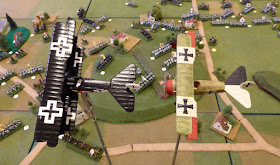No, not that kind of fire drill but an 18th Century musket firing drill performed by re-enactors in uniform and equipment of the French & Indian War.
This firing drill demonstration was conducted on a plaza across the street from Pointe-a-Calliere Archaeology and History Museum in Montreal, Quebec. Nancy and I were visiting Montreal last week and as we climbed out onto the observation tower at the museum in Old Montreal, we were greeted by the sight of a firing drill below the tower. A pleasant surprise and we had a perfect viewing platform from which to watch the proceedings.
Nancy shot the following two videos from our observation post while I looked on and snapped off a few stills. Watch for the NCO's equipment malfunction during the drill.
After the demonstration, we scurried down the stairs and across the street to the plaza to catch the re-enactors before they dispersed. The re-enactors were kind enough to pose for a quick photo. Yes, I am small but these fellas are big! Notice the distinct contrast between the gris-blanc of the justacorps and the white gaiters. These coats are definitely grey.








































